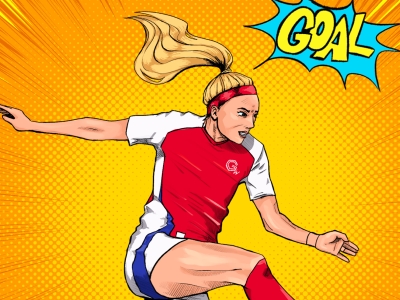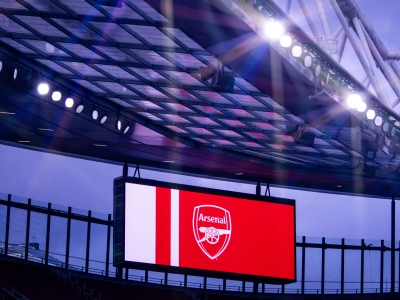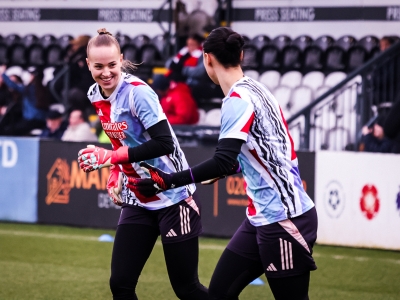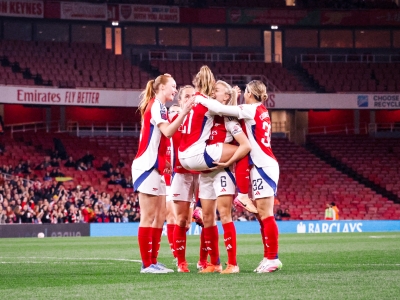I read the response by Sammy Mooner to my back-of-a-fag-packet stats posted the other day. Sammy is obviously happy with very good, occasionally great, football even if it never ends up in trophies. I’m not. And I don’t think I’m alone. I want Arsenal, as a minimum, to win the Champions League and to retain the Premier League – and then do it again from time to time, whilst playing very good, hopefully great, football. I know I want a lot but I am a football fan after all – and it is achievable. So the following horrible fact (if you are prepared to honestly face it) annoys me: four years of no trophies, with periodically good, and occasionally great, football, whilst – at the same time – watching Man Utd achieve relentless success whilst also playing highly attacking and attractive football yet spending only a fifth more than Arsenal over the same period. These are not my opinions, they are facts.
Having said that, I would still never EVER swap Demento for AW in a million years, but if we are honest with ourselves then we have to say that the period has been, to some degree, a failure: even if we have qualified for the Champions League every year for 12 years (which is another statistic regularly used to make a point – and by the way, if that is the criteria then Olympiakos and PSV have done as well or better than Arsenal). Those fans over 40 will remember at least two “big” London teams that traditionally had reputations for playing great football (relative to the quality of the time) but never winning anything of consequence. We used to laugh at them. We still do (for different reasons!).
Watching Arsenal in recent years may indeed sometimes be like watching the Brazil of old. Maybe sweet ten, twenty or thirty pass moves by Arsenal are now more the norm, and maybe this is the sort of play that's rarely matched by any other club on the planet, other than perhaps Barca. The main flaw in this argument is that the Brazil of old and the Barcelona of now actually did it whilst winning trophies. That is a different, higher, level of beauty. Brazil are the most successful national team of all time. Barcelona are currently European, World and Spanish champions having won six trophies last year. Arsenal scrape in fourth every year, so in my book it’s not an especially favourable comparison. It’s much harder to do those ten, twenty or thirty pass moves – or to play like Brazil of old – whilst actually winning trophies at the same time. It is possible, as 2004 proved, thanks to AW. I am a football purist and love great football, but great football also needs to be a means to an end, not just an end in itself. Winning trophies is not the be all and end all, but there needs to be a balance between the two. In my opinion I think we are a bit unbalanced at the moment. But maybe this is not even my opinion – four years with no trophies for a club that wants to be one of the best in the world is a fact.
For the financials, the main point that struck me when I looked at the figures was that it surprised me that Arsenal have spent double what Everton and Villa have, basically to finish one or two places higher up the table. I am not saying that Everton or Villa are more successful sides or play better football than Arsenal – I agree that Arsenal are clearly better than them on both counts and am very happy about that. My opinion is that the amounts spent are disproportionate to what has been achieved in return – based on the criteria that we are told to believe in by our own manager and club (namely, success relative to money spent). Furthermore, Arsenal are not, and have not been, under-resourced on the playing side due to the stadium move, or at least no way as far as is made out. As the Arsenal Supporters’ Trust point out: with the highest seat prices in European (or World?) football, playing to a 60,000 sell out stadium and with the lowest wages to football revenue ratio in top class football, one would expect significant annual surpluses for squad investment – where are they?
The direct slight on Aston Villa and Martin O’Neill made by AW is unjustified in my opinion – and unbecoming of him and Arsenal. AW was referring to big transfer spending by Villa – he didn’t mention that Arsenal’s wage bill is double that of Villa’s. And in the next breath he says we should all remember how young these players all are (average age 24-25). It just doesn’t stack up. You can’t have it all ways. This is not a “for or against” Wenger discussion. I don’t think he should leave and I think he is a legend of our club – but why can’t we question what we are being told if it doesn’t stack up? I think that makes me more, not less, loyal to Arsenal, as long as it is done in a constructive way.
Arsenal’s own financial report says that: “A proper assessment of the Club’s level of player investment needs to be based on overall expenditure on players rather than on a separate consideration of the levels of wage and transfer expenditure.” This is common sense. All I did was to apply Arsenal’s – and AW’s – own logic to Arsenal. So, to get an accurate picture of how a club and its manager are performing, we have to look at four things:
1. how much is spent on wages,
2. the net result of how much is spent and made on transfers,
3. what the return is on the pitch (trophies AND style of football),
and finally, 4. do it over a reasonable period of time, e.g. a five-year period – enough time to be able to judge a club’s/manager’s performance without the hiccups or blips (or windfalls) that can happen in a single year.
The transfer amounts must be net of players bought and sold, since that will show how AW has done a great, in fact I would say incredible, job – IN THAT SPECIFIC AREA – compared to the other managers. But as Arsenal’s own financial report says, you can’t just criticise someone like O’Neill’s transfer spending – you have to look at his wage bill also.
So when Arsène tells us the following “don’t forget that Villa, for me, are a big investor. If you look at the money they have put into their team it is massive.” (www.arsenal.com , 27 Dec 2009) we need to remember that Arsenal have spent double what Villa have spent. I love Arsène, I do not think he should leave, he has totally transformed the reputation of the club (in a positive way) and I would not change the past 13 years – including the last four years with no trophies – for anything. BUT that does not mean that I have to gullibly lap up anything I am told like a sheep. It does not mean that having my own opinion means I am a traitor or any less of an Arsenal fan than anyone else. And if I see something that appears inconsistent, then I have the right to point it out – until someone can give me a proper answer. That is not negativity – it is constructive criticism. Or, from a professional point of view, it is basic professionalism: always question everything, never become complacent, always try and improve, etc.
Here is another independent financial fact. According to the last Deloitte Richlist of football clubs, Arsenal have the sixth highest revenue of any football club anywhere in the world. You and I know as we pay for our season tickets, Sky subscriptions, Arsenal TV subscriptions, food and drink at the ground, programmes, merchandise, and so on. In fact, Arsenal are moving up this ranking, from 10th in 2004/05, to 9th the year after to 5th and 6th in the last two years The 7th placed club (Liverpool) is around £50m behind. So, in the whole of world football only Real Madrid, Man United, Barcelona, Bayern Munich and Chelsea make more money each year than Arsenal. Arsenal are not poor or under-resourced, either in relative or absolute terms. At all. That is a myth. And to somehow claim that Arsenal are under-resourced and that coming fourth every year is a great result on the money invested is, to be kind, disingenuous. Furthermore, rather than being a financial millstone, the new stadium has arguably actually helped Arsenal’s financially strong position. The 9000 middle tier seats cover double the interest costs on their own. Whilst Chelsea continue with their 41k capacity and Liverpool with their 45k, both with far less corporate capacity.
Obviously revenue is only one factor in a club’s (or a business’s) finances but it is a very important one nonetheless. Another factor is debt or other money that clubs have to pay to owners or banks. Arsenal have to pay interest on the loans taken out to build the stadium and the flats at Highbury. The interest on these loans costs around £16-17m per year, which is low and is thanks to the professionalism of the board when they did the deals with the banks. £16-17m per year is a lot of money, of course, but only a fraction of what Man Utd and Liverpool are paying back each year in their interest (not to mention the big debts that Real Madrid and Barcelona also have – and have to pay interest on). But it is only a tiny portion of Arsenal’s revenue. After interest, tax and everything Arsenal made £35m clean bottom line profit last year, £25m the year before and have £100m cash in the bank. And since the latest financial results were announced there has been £40m+ from Adebayor and Touré plus £85m from sales of Highbury flats. So, again, Arsenal are not poor or under-resourced. At all. Myth. And if we don’t challenge myths then we are heading for complacency and disaster in my opinion.
To his credit Ivan Gazidis has admitted this and said that what has been happening is just not good enough. It could be a lot worse, for sure, and the great football makes up for it to some degree. But, if you want Arsenal to be the best then I am sorry but it is just not good enough.
A second myth is that somehow Arsenal is a team of kids who are very young. This is the type of stuff that we are fed: "People forget they are an average age of 22. What they do is remarkable. I'm convinced they have the potential to be my best team and what they do now confirms what I think." (www.skysports.com , 26 Dec 2009)
What are the facts? The facts are that Gallas and Almunia are 32. Arshavin is 28. Van Persie and Sagna are 26. Clichy and Vermaelen are 24. Cesc and the others (with the exception of Ramsey) are in their early 20s. Hardly kids. A lot of them were kids but are now in their early 20s. We are waiting for them to deliver success and to justify their enormous salaries. It is possible to combine both: Jonny Evans made his debut last season in a crucial position (centre back), played 17 games and Man United won the league.
And here it is here I am afraid that we have to be constructively critical once again by asking whether AW’s recruitment and player development post-2004 has really been successful in footballing terms (it seems to do very well in financial terms – but Arsenal is a football club, not a player agency). Pre-2004 it is, overall, in my opinion indisputable. AW basically spotted and developed three players into world-class megastars (Vieira, Pires, Henry) not to forget others like Anelka, Overmars and Ljungberg. But since 2004 it has been nowhere near the same level. The concept of recruiting teenagers and hoping that they grow up and bond together into a winning team is basically a consequence of (a) the stadium move and its consequent supposed financial constraints, (b) a reaction to other clubs doing it (i.e. an arms race to sign players younger and younger: because if you don’t sign him then another big club will) and (c) the fact that AW has an interest and talent for doing it. But, based on the evidence to date, overall it simply does not work. Ajax maybe made it work in the pre-Bosman era in 1995 but apart from that I can’t think of another case of this policy being successful in football. (Ed’s note – and it’s often forgotten that the mid-1990s Ajax side had a fair sprinkling of very experienced heads amongst the youngsters)
All of Arsenal’s best players under the 13 years of AW, with the exception of Cesc, did not move at 15/16/17 but at at least 19/20 years old, often older (Pires, Overmars, Arshavin, hopefully Vermaelen and Sagna, etc). Clubs like Barcelona and Lyon do not sign teenagers (with very rare exceptions like Messi) and other big clubs like Bayern Munich are in the process of abandoning that policy. There is a very simple reason for this, which is that (a) 15-17 is simply too young to judge a player for sure, (b) will they really develop as much stuck in the reserves or playing against Norwich and Ipswich youth teams compared with do-or-die Championship or continental championship commitment?, and (c) kids learn by making mistakes – so let other (smaller) clubs take the hit rather than taking it yourself. An example of the latter is how, six years on, we now know that Senderos is not good enough – but we had to pay a Champions League quarter-final against Liverpool, several crucial goals from Didier Drogba, etc, to find out. I fear that we are going through the same process with Almunia and Denilson but I know judging players is subjective. But I don’t care how good the voodoo is at Shenley, no-one can tell me that Vito Mannone was better prepared for his first team debut after four years on the training ground with Gerry Peyton with not a single competitive match of football – rather than four years of tough, competitive lower division Italian (or English) football.
We are in the curious position of having a “Director of Football” (main qualities = recruitment, player development, youth development, long-term perspective) like AW in the position of manager (main qualities = first team selection, man management and motivation, tactics, short-term success), whereas in most English clubs there is a manager doing both jobs. So in our case the first team takes the hit as young players develop, but the long-term stability and health of the club does better. Whereas in most other English clubs it is the long-term health of the club that takes the hit as the 15-20 man Hughes/Allardyce/Bruce/Megson (delete as appropriate) circus moves on to the next club for another 18 months. If AW’s ego can take it then, at some point, for the good of Arsenal’s future he could move upstairs, and let the club finally modernise its structure by creating a balance of power and ideas at the club with a Director of Football and a first-team coach – rather than all power centralized in one man as is the normal (archaic) English club structure. Man Utd and Arsenal have only been successful with this model by luckily finding such capable managers. This system, or a variant of it, works at Barca and all other big continental clubs, but with one or two exceptions (e.g. Reading) English clubs have imported it in a ham-fisted way to date (e.g. Comolli, Wise, etc).
Myth one and myth two seem to go hand in hand. Again, my question is, if Arsenal’s team really is so young, then why is our wage bill (£101m) double that of teams like Villa (£50m), Everton (£44m) and Tottenham (£53m)? And if Arsenal are so poor, then why are we able to spend so much? And if we are able to spend so much, why do we win nothing (albeit playing great football)? Something doesn’t add up there.
What AW has done is very important in the sense that the style of football that a club plays can last for many many decades – if you speak to the older generation in London you will probably hear a lot about Tottenham Hotspur being a big club. The facts tell us that the last time they won the league was half a century ago and they have only ever won it twice – yet they are perceived as somehow a big club almost entirely because of the style of football that they played in the 1950s, in the 1961 double team, and then later also in the 1980s. Leeds, Derby and Forest all won championships (and two European Cups in the case of Forest) in the 60s and 70s yet Tottenham, because of the way they played, still have a certain image as a club (a marketing person would call it “brand-building”). In a similar way, in future years that will be AW’s true legacy for Arsenal and I think Sammy is spot on in that sense – AW’s teams, and Arsenal as a club, will be remembered far beyond what they achieved in terms of trophies (3 championships and no European Cups in 13 years compared to 8 championships and 2 European Cups for Man Utd in the same period) because of the way they played. But people will mainly remember the Adams, Petit and Vieira winning team of 98, the Vieira, Henry and Pires winning team of 2004 – not the losing Hleb, Flamini and Adebayor team of 2007.
The conclusion to all this is to say the following: Arsenal FC, led by AW and his skills, tried an original and innovative strategy to marry an expensive stadium move and stay successful by signing – and continuously re-signing – very young players on high salaries and waiting (and hoping) for them to mature and develop into world class talents together. After 4-5 years in action we can now pass judgment as following: IT HAS NOT WORKED. However, this does not mean that AW should leave. This should not be a shallow black-and-white discussion.
Although it has not worked, it has not been a disaster either, since Arsenal qualify for the Champions League each year and often (but not always, contrary to the general view) play great football. And of course this season could end with success. It is unlikely in my view, due to the thinness of our squad, and because this squad does not seem psychologically strong enough, or to have enough winners, to sustain success over a whole season rather than in long stretches within a season.







